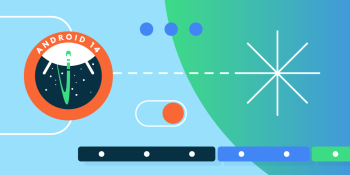
6 Tips and Tricks for Android App Developers
Developing Android apps can be an exciting and rewarding journey, but it’s not without its challenges. Whether you’re a seasoned developer or just starting your journey, staying up to date with the latest tools, techniques, and best practices is crucial for creating successful apps. In this blog post, we’ll delve into six valuable tips and tricks to help Android app developers enhance their skills, streamline their development process, and create exceptional mobile applications.
Leveraging App Templates for Efficiency
Developing an Android app from scratch can be a time-consuming process. To streamline your workflow and save valuable development time, consider using app templates, since these pre-designed templates provide a foundation for your app, including layout, navigation, and even core functionalities. They can significantly reduce the initial development phase, enabling you to focus more on customizing your app’s features and user experience.
Adopting the Latest Android Architecture Components
Adopting the Latest Android Architecture Components is a pivotal step in modern Android app development. These components, including LiveData, ViewModel, and Room, have redefined how apps are designed and function. LiveData empowers developers to create real-time, data-driven applications, ensuring that users receive up-to-the-minute information. ViewModel, on the other hand, simplifies the management of UI-related data, reducing the risk of memory leaks and enhancing the overall app stability. Room, a powerful local data storage library, facilitates efficient data management and access. By integrating these architecture components into your app, you can develop more robust, maintainable, and responsive applications, enhancing the overall user experience and setting your app apart from the competition.
Mastering Material Design
Mastering Material Design is an essential aspect of creating exceptional Android applications. Material Design, developed by Google, is a design language that focuses on creating visually appealing, intuitive, and user-friendly interfaces. It emphasizes the use of consistent typography, meaningful motion, thoughtful color choices, and responsive layouts to ensure a harmonious and engaging user experience. By diving deep into Material Design principles and guidelines, app developers can create apps that not only look great but also feel natural and intuitive to users, regardless of their level of familiarity with the Android platform. It’s about creating a visually consistent and enjoyable journey for users, enhancing not only the aesthetics but also the usability of your app.
Optimizing App Performance
Optimizing app performance is a paramount concern for Android app developers. A responsive and smooth user experience is a critical factor in retaining and engaging users. To achieve this, developers must pay close attention to various performance aspects. Techniques like lazy loading for images and data can significantly reduce initial loading times, ensuring users don’t experience frustrating delays. Background threading is essential for handling time-consuming tasks without freezing the app’s interface. Effective memory management is another key aspect, preventing memory leaks and app crashes. Profiling tools provided by Android Studio are invaluable for identifying performance bottlenecks and optimizing resource usage. By implementing these strategies, developers can create apps that not only meet users’ expectations but also keep them coming back for more.
Embracing the Power of Kotlin
Kotlin, with its modern and expressive language features, significantly enhances the development process. Its concise syntax reduces boilerplate code, making your app more readable and maintainable. One of Kotlin’s standout features is its robust null safety, which helps eliminate dreaded null pointer exceptions, a common source of app crashes. Additionally, Kotlin seamlessly interoperates with Java, allowing developers to leverage existing codebases while taking advantage of Kotlin’s innovative capabilities. Its extensive standard library simplifies many complex tasks, from data parsing to network requests. By adopting Kotlin, you’re not only improving the quality of your code but also enhancing your productivity and efficiency, making it a valuable tool for any Android app developer.
Testing and Debugging Like a Pro
Comprehensive testing and effective debugging are crucial for delivering a bug-free app. Android Studio provides a suite of testing tools for unit testing, UI testing, and instrumentation testing. Embrace test-driven development (TDD) to catch bugs early in the development cycle and ensure your app’s reliability. Additionally, take advantage of remote debugging tools and profilers to identify and resolve issues quickly.
Android app development is a dynamic field that demands constant learning and adaptation. By using app templates, adopting the latest Android architecture components, mastering Material Design, optimizing performance, embracing Kotlin, and following best practices in testing and debugging, you can elevate your skills and create remarkable Android applications. These tips and tricks are the stepping stones to building successful apps that not only meet but exceed user expectations, ultimately ensuring the success of your mobile development endeavors. Stay informed and committed to honing your skills, and you’ll be well on your way to becoming a top-notch Android app developer.